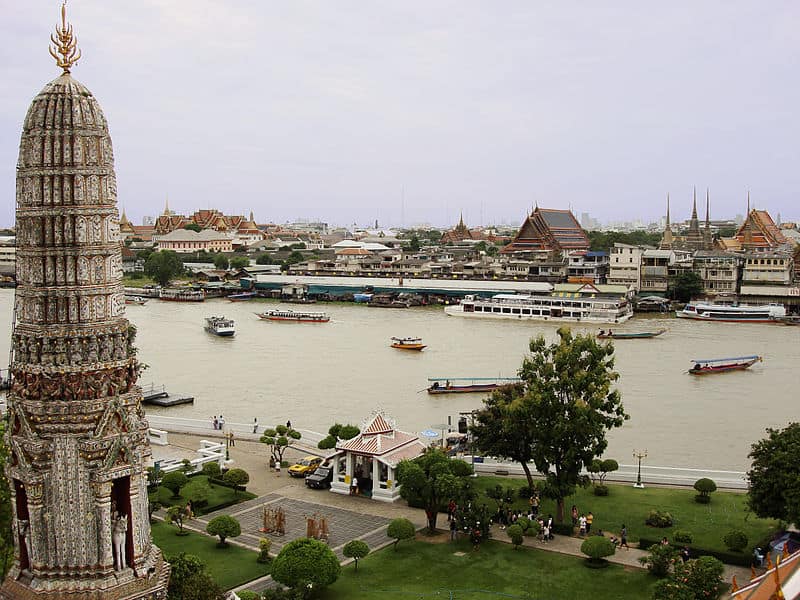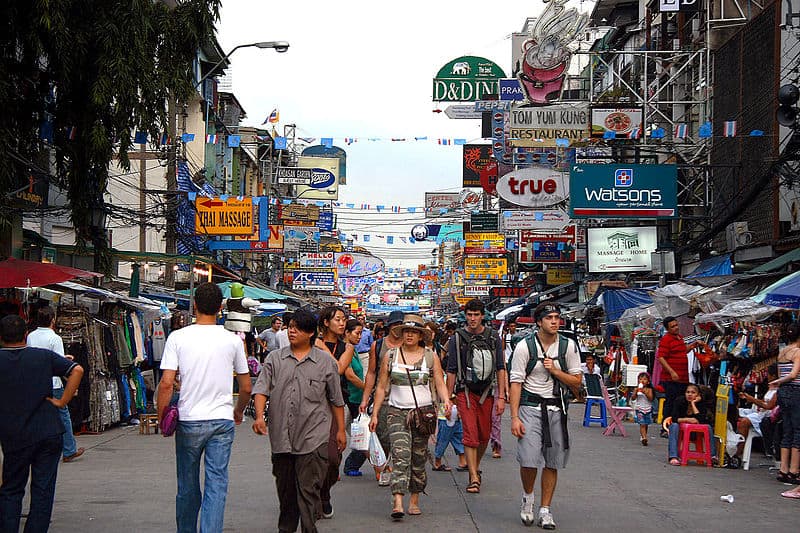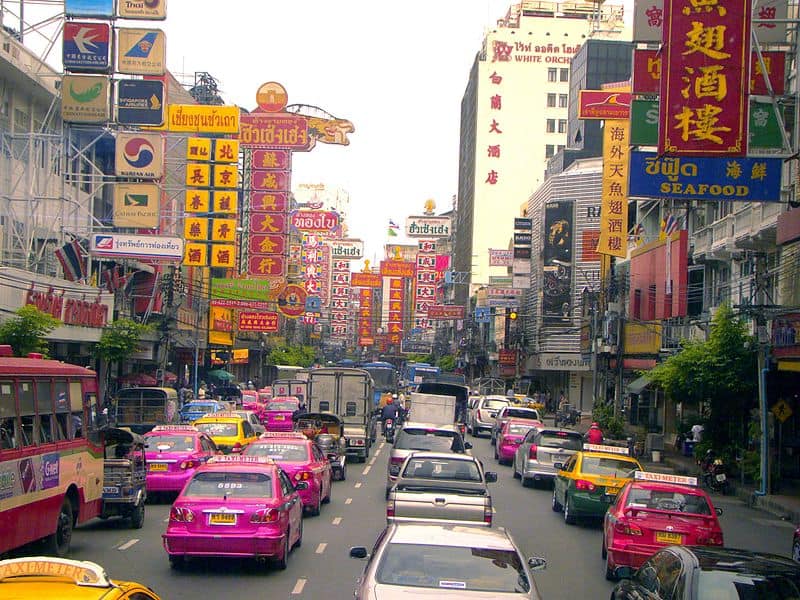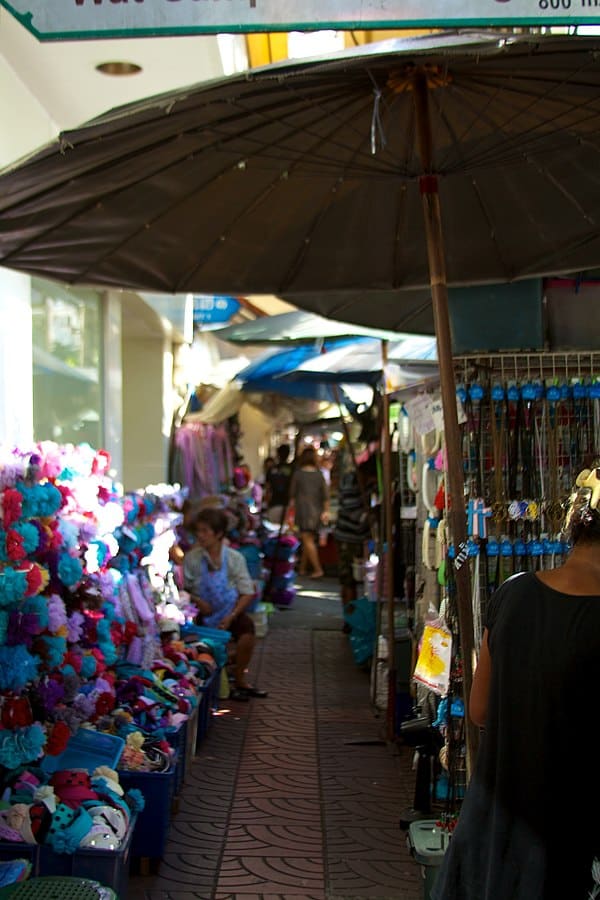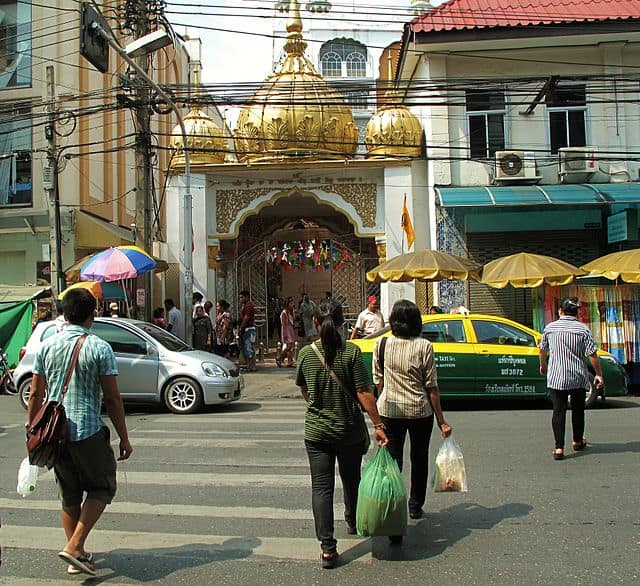A Brief Guide to Bangkok’s Old Town region
Bangkok is a city that offers much diversity. The SE Asian capital contains many different flavours that bring a wide variety of experiences to different people, both natives and visitors alike.
It may be that for many people the word Bangkok conjures images of deluxe, mega shopping complexes, while for others it may mean markets and street food. Then there are the seedy, somewhat rundown areas with red-light districts and cheap bars that provide stark contrast to the swanky, hi-so restaurants, cafes and modern pubs with a cosmopolitan feel.
It’s true that hordes of tourists and locals alike in Bangkok will likely head for the central, downtown areas of the city like Siam, Sukhumvit, and the central business district and entertainment region of Silom/Sathorn.
And there is indeed much to see and do in these areas of the Thai capital. You will find all manner of shopping delights from hi-so malls, mega shopping complexes, and street markets. There are entertainment and leisure outlets by the bundle by way of cinema complexes, aquariums, bowling alleys, ice skating rinks, go-karting tracks…and the list goes on and on.
However, if noisy, crowded, areas (with heat) that provide a seemingly endless assault on both the senses and the wallet doesn’t sound like your thing, then maybe you might consider visiting or staying in a part of Bangkok with an entirely different vibe.
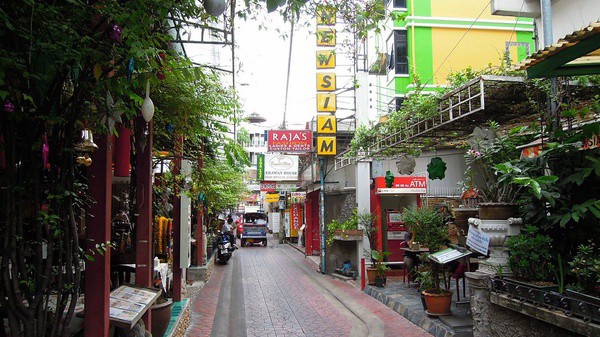
The Old Town is something of a broad term which covers an area quite distance away from the ‘downtown’ areas of the city.
Close to the famous Chao Phraya River, the region is steeped in culture and offers something of a more authentic take on the city. This comes by way of its temples, museums, river cruises and views, and some of the best cuisine in the city in Chinatown.
It comprises the ‘Rattanakosin’ section of the city which is home to some of the country’s most famous cultural and historical buildings and landmarks. If you want famous temples like Wat Pho and the Grand Palace then this is the place to head. (As these places have already been covered in other posts we won’t go too deeply into them here).
If you also love the idea of breath taking sunset river scenarios overlooking 15th century temples you will indeed find them in this region, along with one of the largest Chinatowns in the world.
Of course if you visit the tourist hot spots you’ll still likely encounter tourists – but only in and around certain areas and attractions, and for the most part you’ll find this part of the city has a distinctly different atmosphere compared to the thrall of the central shopping and entertainment districts.
Aside from the temples and other landmarks, Khao Sarn Road is probably the most touristy spot in the Old Town.
But if you head over to the Old Quarter of Bangkok you’ll encounter an entirely different scenario to the ones in any of the central, downtown districts. You won’t find any deluxe, mega shopping complexes or 25-screen cinemas in this part of the city that has, for the most part, so far managed to escape the onslaught of modern, mass development that continues to trample its way through the city.
That’s not to say that you can’t do any shopping here — Chinatown has mazes of markets with the best prices in the city, as well as some of the best food to be found in Bangkok.
Alongside the culture of some of the most visited tourist attractions in the country, you’ll also find that in places like Chinatown and the surrounding areas many of the original shop house-type buildings have still been largely untouched by the onslaught of commercial development.
That is changing though, and the area has started to become a bit more trendy and upmarket in recent years, with some of the old shop houses and various other types of building being converted into trendy cafes, bars, restaurants, apartments, and boutique-style hotels.
The Charoen Krung Road is another section of the Old Town that has become more and more trendy in increments over the last few years with its growing number of hip and innovative bakeries, coffee shops, restaurants, bars, art houses and tattoo parlours, to name but a few.
There is also the MRT subway line extension which has made the area much more easily-accessible than previously, when the main choices of getting to this part of the city would have been by canal boat, bus, or taxi.
There are a couple of prominent canal boat stops if you fancy a more authentic way of getting around the area.
Pan Fa Lilat Pier
This is a canal boat stop close to the democracy monument, the UN Building, and Khaosarn Road, and is the end of the line for this boat’s run.
The stop is under a historic bridge behind the Mahakan Fort at the end of Ratchadamnoen Road in the Old Town, where the UN Building, among a fair few other prominent historical ones is situated.
Hopping off at this stop places you in the vicinity of the Rattanakosin region of the Old Town quarter of the city, where a fair few of the old historical icons listed on many a tourist’s list are located. This spot also happens to be just a short walk to the equally well-known ‘backpacker’ zone (although seemingly not for much longer) — Khaosarn Rd.
Location: Ratchadamnoen Avenue, Banglamphu Bang Khun Phrom, Phra Nakhon, Bangkok 10100
Bobae Market Pier
Not too far along from Pan Fa, Bobae is the stop to hop off at if you fancy sampling one of the best real shopping experiences Bangkok has to offer in terms of price and quality.
No this is nothing close to CentralWorld, but is the best low-priced, discount, wholesale indoor market for clothes, accessories, and all manner of other things at a third of the price you’ll find them being sold in shops, markets and the stalls and malls of more touristy areas.
So let’s have a closer look at some of the sections of the Old Town region of Bangkok.
Charoen Krung Road
The Charoen Krung Road is nearly as old as the city of Bangkok, although in recent years it has certainly undergone a bit of revamping.
It is one of the old riverside neighbourhoods with Chinese and Muslim proportions in the population which is reflected in much of the street food of the area. It has gradually been changing, seemingly becoming more of a hip neighbourhood due to its growing number of art galleries, meeting spaces, trendy coffee shops, bakeries, bars, and restaurants.
The accommodation in the area has also morphed into a growing number of trendy and innovative boutique hotels and hostels.
Charoen Krung is known among locals these days as something of a ‘Creative’ district, rich in arts and culture that seemingly coexists along with both property preservation and development.
In fact, the Thailand Creative & Design Centre (TCDC) started an initiative in the area by relocating its headquarters to the Grand Postal Building on Charoen Krung Road in 2019. It is a facility big on arts and design, and houses both an exhibition zone and co-working spaces with the intention of encouraging creativity.
Within the vicinity of the TCDC, you will also encounter a growing number of other art spaces and galleries. One of them is the Serindia Gallery (www.serindiagallery.com) in Soi Charoen Krung 36.
This is quite a well-established gallery which exhibits contemporary art along with various photographic exhibitions. These comprise works from both local and international artists, housed in a 60-year old colonial-style house typical of the area.
In Soi Charoen Krung 30 you’ll find a variety of trendy and cool places such as Warehouse 30. This is a huge facility comprising a total of seven warehouses and a total space of 4,000 square metres.
The warehouse has four main areas. This includes a creative co-working space, a range of shops selling things like music (including vinyl) books, and flowers. There are also a few fashion outlets, cafes & restaurants, furniture shops, and even a space with a screen showing documentaries.
A short distance from this facility, in Soi Charoen Krung 28, is another gallery by the name of Most Gallery (www.mostgallery.com). This place is housed in a 3-story, traditional-style shop house and is open by appointment only.
Just along from Most Gallery you’ll find a place called Speedy Grandma, a gallery-cum-bar which plays host to various modern art exhibitions. Sometimes you’ll encounter some of the artists themselves involved in talking sessions with other artists or meeting local fans.
So you get the idea – this long road in the Old Town region of Bangkok is quite and arty area. Many of the old shop houses have been converted to restaurants, bars, and art and photography exhibition – sometimes all of those things combined!
If you are you exploring this old section of Bangkok on foot (recommended), you will also find some of the most renowned graffiti and street art in the city on some old shop houses and walls.
Chinatown
Chinatown in Bangkok is a mish-mash of various influences, but it maintains its association with strict Chinese culture in many ways. Here you’ll find plenty of temples and shrines along with markets, traditional restaurants, and the famed street food.
There is a distinct hint of modernisation creeping into the area by way of coffee shops, restaurants, and the various accommodation options that make it much more of an attractive area to stay in.
You’ll find hotels like the upmarket Bangkok China Town Hotel and the much more budget-friendly Smile Inn as two examples of the hotels on offer in the area.
There is also a growing number of hostels to suit various budgets such as the Four Sisters Homestay and the much cheaper Loft 22 Hostel. You’ll also find airbnb-type apartments are appearing more and more as accommodation options, like the Sala Arun and Thanabhumi, 2 examples of the various price ranges on offer in the area.
One of the best ways to explore Chinatown once you get there is undoubtedly on foot. Just take a wander and see if you can find your way back the way you came without the aid of Google map!
Sampeng Lane in Chinatown
Sampeng is NOT downtown Siam. In fact, it is a jumbled and chaotic maze of market that was actually the first, original high street of the area when the Chinese community first began to establish itself. In fact, it pretty much epitomises the area and is one of the first places that many locals head when they come down here looking for something.
This street is basically a slim and winding alley of seeming clutter that seems in need of a helping hand in terms of logical organisation. Upon closer inspection though, it becomes a bit more apparent that you can find just about anything here, although admittedly not always that easily.
Location: Soi Wanit 1, Chakkrawat Rd, Samphanthawong, Bangkok 10100
Hours: Daily from 8.30 am to 6 pm
Little India
Just around the corner from Chinatown you can find yet more cultural diversity by way of Bangkok’s Phahurat Market in the ‘little India’ section of the city.
This is an area nothing like the neighbouring Chinatown district, in which it can be quite easy to actually lose all sense of direction in the maze of streets that all seem to look the same if you aren’t careful.
This is not a particularly touristy area, which makes it more appealing in some ways, and even though it’s not exactly a massive affair, there are a few prominent indicators as to the Indian community prevalent here such as the huge Sikh temple, identifiable by its golden dome.
There are also a good few more curry houses (not the Thai style) than you would normally happen across in any other part of Bangkok, and then there are the silk and other textile shops. These places are deemed to be the best by local Thais looking to get their own tailoring done (or maybe do some of their own – as even the Thai-Chinese tailors come here to pick up materials).
You’ll find all this and much more if you head over to Bangkok’s Old Town. A much more authentic taste of the city that’s not just all glitzy shopping malls and has more to offer in cultural terms!
Planning a trip to Paris ? Get ready !
These are Amazon’s best-selling travel products that you may need for coming to Paris.
Bookstore
- The best travel book : Rick Steves – Paris 2023 – Learn more here
- Fodor’s Paris 2024 – Learn more here
Travel Gear
- Venture Pal Lightweight Backpack – Learn more here
- Samsonite Winfield 2 28″ Luggage – Learn more here
- Swig Savvy’s Stainless Steel Insulated Water Bottle – Learn more here
Check Amazon’s best-seller list for the most popular travel accessories. We sometimes read this list just to find out what new travel products people are buying.





